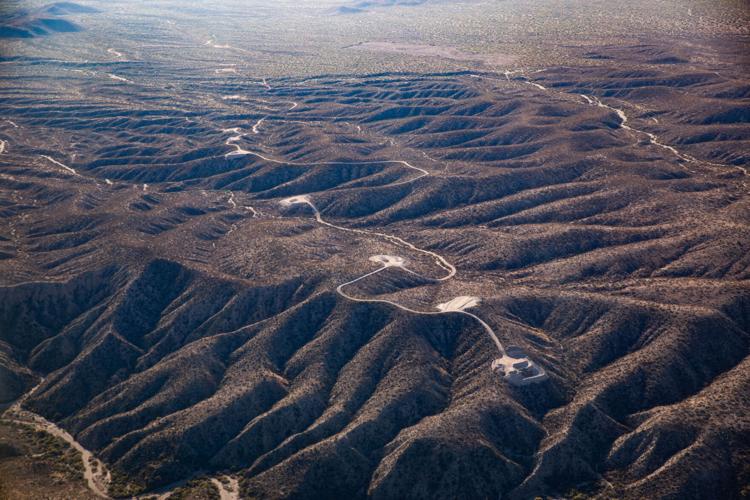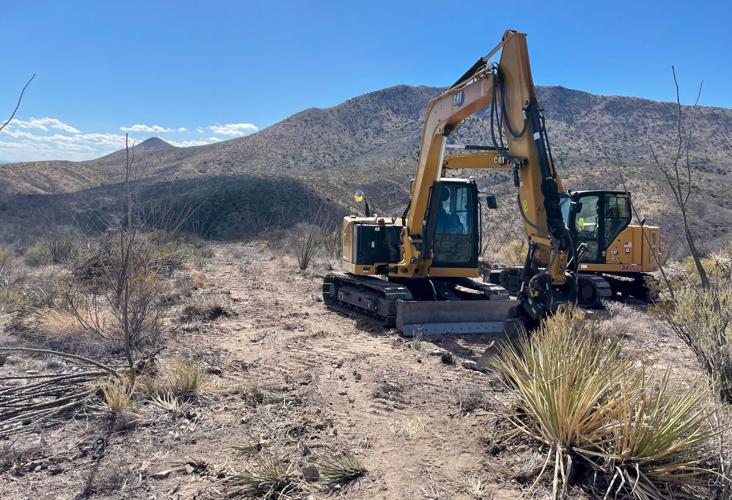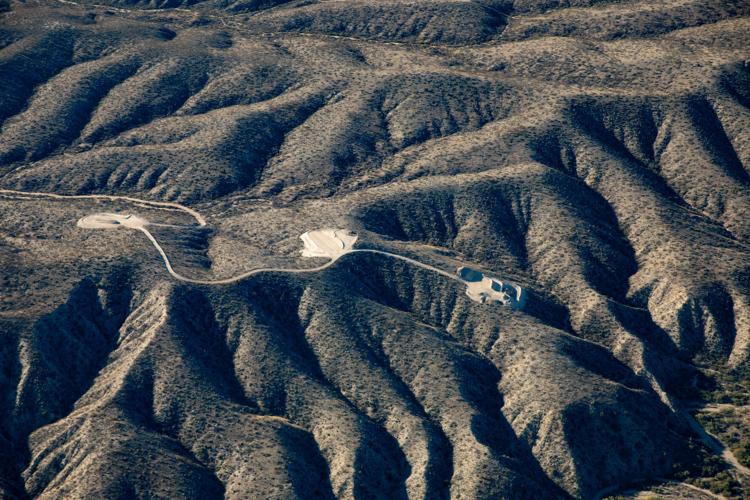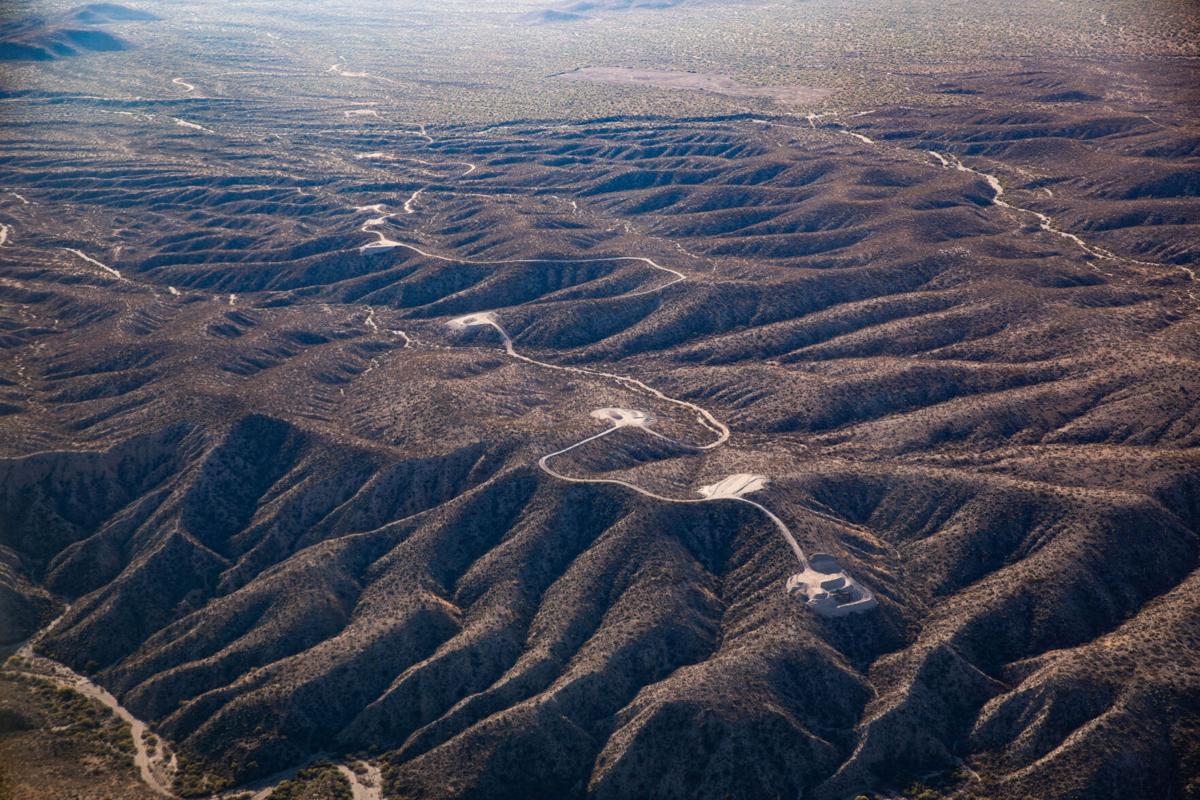Two Native American tribes in Arizona are suing the U.S. government over the construction of a wind-energy transmission line through the San Pedro Valley east of Tucson.
The Tohono O’odham Nation and the San Carlos Apache Tribe are calling for construction work to stop on the SunZia Southwest Transmission Project until the Bureau of Land Management completes a “legally adequate inventory of historic properties and cultural resources that would be impacted by the project.”
The lawsuit, filed Wednesday in Arizona federal court, claims the 550-mile-long powerline project will cause “serious, irreversible adverse effects on tribal cultural sites and sacred areas, including areas with human remains.”
Two Tucson-based conservation groups, Archaeology Southwest and the Center for Biological Diversity, joined in the legal action against the bureau, the Interior Department and Interior Secretary Deb Haaland.
San Francisco-based Pattern Energy has begun cutting access roads and building pads for towers near the San Pedro River.
By 2026, the transmission line is expected to start delivering electricity to Arizona and California from a 3,500-megawatt wind energy project Pattern is also building across three counties in central New Mexico.

An aerial picture shows construction on the SunZia Southwest Transmission Project west of the San Pedro River on Nov. 13, 2023.
The company’s plans for the Arizona portion of the power line include about 780 towers up to 195 feet tall along a 200-mile corridor stretching from southern Greenlee County to central Pinal County.
The route crosses the San Pedro River about 15 miles north of Benson, then runs north through a remote, biologically rich area along the eastern foothills of the Rincon Mountains near Cascabel.
The Tohono O’odham and San Carlos Apache tribes have also lodged a complaint over SunZia with the Arizona Corporation Commission, which regulates utilities in the state.
Interior officials declined to discuss the lawsuit.
Pattern Energy’s assistant vice president of environmental and permitting, Natalie McCue, said it’s too late to change the path of the transmission line now.
“The time has passed to reconsider the route, which was approved in 2015 after a robust and comprehensive review process,” McCue said in a written statement. “It is unfortunate and regrettable that after a lengthy consultation process, where certain parties did not participate repeatedly since 2009, this (lawsuit) is the path chosen at this late stage.”
McCue added that construction in the San Pedro Valley is ongoing and on schedule.
The BLM gave final approval for construction of the transmission project across federal land in May, when it signed off on several changes to the SunZia plans first approved by federal regulators 9 years ago.
In August, the two tribes filed a formal dispute with the Interior Department, accusing the bureau of failing to comply with the National Historic Preservation Act and ignoring tribal input and consultation requests for more than a decade.
A month later, bureau officials granted Pattern limited approval to proceed with construction in areas where the agency determined there were no historic or cultural resources present.
That prompted Tohono O’odham Chairman Verlon Jose to send an “urgent request” to Haaland in late October, calling for an immediate halt to construction activities in the area pending further review.
Work in the San Pedro Valley was paused for about a month, but it resumed in late November, after the BLM cleared Pattern to continue its work while the agency considers whether the valley qualifies for federal designation as a so-called “traditional cultural property.”
At the same time, bureau officials declined to reconsider the agency’s 2015 decision to grant a right-of-way for the SunZia project through the San Pedro Valley.
Opponents of the project argue that the transmission line never should have been routed through such an important and relatively undisturbed stretch of Arizona’s last free-flowing river, when an existing utility corridor could have been chosen instead.
The Biden administration has touted SunZia as a “milestone” on the path toward a nationwide clean-energy grid by 2035, and several national environmental groups have come out in favor of the renewable energy the roughly $8 billion project is expected to generate and deliver.
Archaeology Southwest president and CEO Stephen Nash said his group was compelled to join the lawsuit because the San Pedro Valley is “replete with places that are significant in O’odham, Apache, Hopi and Zuni culture and religion.”

Construction equipment waits at the site of work in the San Pedro Valley for the SunZia Southwest Transmission Project on Oct. 29, 2023.
John Welch, director of the nonprofit group’s landscape and site preservation program, said federal regulators prioritized profits over protection by approving “the route least costly to the owners and most harmful to the San Pedro Valley,” despite years of “evidence-based requests” to preserve the area.
Get your morning recap of today's local news and read the full stories here: tucne.ws/morning







